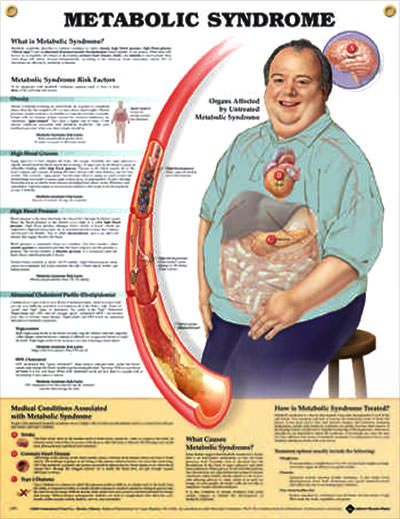Sun exposure reduces risk of heart disease. High cholesterol levels are associated with vascular diseases such as heart disease, ischemic stroke and intermittent claudication (an occlusion of the arteries of the legs that leads to pain and disability). The authors of a recent study compared the effects of vitamin D supplementation with sun exposure to determine which was more effective in reducing risk factors.[1] A group of individuals with insufficient serum vitamin D levels was divided into two groups with different experimental protocols: one was treated with sun exposure to the arms and face between 11 AM and 3 PM and the other was treated with 1,000 IU of vitamin D. A third group had “normal” vitamin D levels and served as a control (no treatment group). Total cholesterol levels and its components of cholesterol, HDL and LDL, were also measured to determine the positive (or negative) effects of the two treatment protocols.
The results were enlightening. Both experimental groups had significant increases in vitamin D. However, the results with cholesterol varied. A significant decrease in total cholesterol was noted in the sun exposure group, and HDL and LDL also decreased in the sun-exposure group. However, in the vitamin D-supplement group, a significant increase was noted in in total cholesterol. HDL also increased significantly, and LDL increased non-significantly.
In other words, vitamin D supplementation could actually lead to an increased risk of vascular diseases by raising total cholesterol, whereas sun exposure is protective against those diseases. So the takeaway is that there is no substitute for the sun when it comes to providing some protection against vascular diseases.
There are those people who worry that melanoma risk may be increased by regular sun exposure. However, we have mentioned many time in this blog that melanoma is much more common among those who work indoors than those who work outdoors. It should also be mentioned that vascular diseases kill far more people than skin cancer. Dr. Richard perhaps said it best:
“Sunlight may have beneficial cardiovascular effects, independently of Vitamin D production. Vitamin D could, in these circumstances, act as a marker for sunlight exposure and its postulated beneficial effects. These recent human data show the physiological relevance of photorelaxation. High blood pressure is the leading cause of disability-adjusted life years lost worldwide and as a risk factor underlies 18% of all deaths.” Weller further noted: “The action spectrum of nitrite release shows ultraviolet B is also involved in nitrite reduction to Nitric Oxide, and thus sunlight may be more effective than a pure UVA source.” He concluded: “the prevalence of cardiovascular and cerebrovascular deaths is around 100 times higher than those from skin cancer. Interventions leading to small changes in the incidence of cardiovascular disease are thus of greater benefit to the health of the public even than large changes in skin cancer incidence.”[2]
Safely embrace the sun and your heart, brain and blood vessels will love you for it!
[1] Patwardhan VG, Mughal ZM, Padidela R, Chiplonkar SA, Khadilkar VV, Khadilkar AV. Randomized Control Trial Assessing Impact of Increased Sunlight Exposure versus Vitamin D Supplementation on Lipid Profile in Indian Vitamin D Deficient Men. Indian J Endocrinol Metab. 2017 May-Jun;21(3):393-398.
[2] Weller R. The health benefits of UV radiation exposure through vitamin D production or non-vitamin D
Pathways. Blood pressure and cardiovascular disease. Photochem. Photobiol. Sci. 2016.
The necessity of sun exposure for heart health, by Marc Sorenson, EdD…
Despite the fact that higher vitamin D levels are nearly always found to be related to reduced risk of cardiovascular disease[1] and associated diseases such as diabetes mellitus,[2] randomized controlled trials have not found that vitamin D supplementation reduces risk of cardiovascular disease.[3]
Therefore, vitamin D levels are likely a surrogate measurement for sun exposure, meaning that some other photoproduct such as nitric oxide (NO) may be responsible for the lowered risk of CVD. A pair of recent papers reported that leisure-time or recreational outdoor physical activity was significantly associated with reduced risk of cardiovascular disease. In a study in the U.S., both frequency and intensity of outdoor activities were associated with reduced risk, as was higher vitamin D level.[4] When vitamin D levels were removed from the equation, an inverse association was still found between outdoor recreational activity and mortality. The authors stated the following: “The underlying mechanism for this association may not involve 25(OH)D hence, further studies are warranted to confirm and investigate the underlying mechanism.” I would suggest that nitric oxide was the protective photoproduct, produced by sun exposure, which lessened the risk of CVD with outdoor activity.
Similar findings have been found for hypertension, diabetes mellitus, heart failure, stroke, and myocardial infarction (heart attack). In a study in Finland, older adults who had moderate leisure-time activity had 30-40% reduced mortality and cardiovascular disease rates than those with low activity levels, while those with high activity levels had 50% lower rates.[5]
Two messages from this research: (1) Start living more of your life outdoors. (2) Be sure to obtain plenty of non-burning sun exposure during you outdoor activity. Your life may depend on it.
[1] Wang L, Song Y, Manson JE, Pilz S, März W, Michaëlsson K, Lundqvist A, Jassal SK, Barrett-Connor E, Zhang C, Eaton CB, May HT, Anderson JL, Sesso HD. Circulating 25-hydroxy-vitamin D and risk of cardiovascular disease: A meta-analysis of prospective studies. Circ Cardiovasc Qual Outcomes. 2012 Nov 1;5(6):819-29.
[2] Song Y, Wang L, Pittas AG, Del Gobbo LC, Zhang C, Manson JE, Hu FB. Blood 25-hydroxy vitamin D levels and incident type 2 diabetes: a meta-analysis of prospective studies. Diabetes Care. 2013 May;36(5):1422-8.
[3] Veloudi P, Jones G, Sharman JE. Effectiveness of vitamin D supplementation for cardiovascular health outcomes. Pulse 2016;4:193-207 https://www.karger.com/Article/FullText/452742
[4] Donneyong MM, Taylor KC, Kerber RA, Hornung CA, Scragg R. Is outdoor recreational activity an independent predictor of cardiovascular disease mortality – NHANES III? Nutr Metab Cardiovasc Dis. 2016 Aug;26(8):735-42.
[5] Barengo NC, Antikainen R, Borodulin K, Harald K, Jousilahti P. Leisure-Time Physical Activity Reduces Total and Cardiovascular Mortality and Cardiovascular Disease Incidence in Older Adults. J Am Geriatr Soc. 2016 Dec 26. doi: 10.1111/jgs.14694. [Epub ahead of print]
By Marc Sorenson, EdD, Sunlight Institute…
Sepsis is a deadly disease, defined as infection of the tissues by bacteria. It can spread throughout the body and blood, where it is known as septicemia. Sepsis accounts for 500,000 emergency-room hospital visits per year in the USA, and the typical stay is nearly five hours.[1] It is one of the most deadly of medical conditions and often results in multiple organ failure.[2] It is, in fact, one of the top-ten causes of death. It is more common than heart attack, and claims more lives than any cancer.[3] Yet, much of the population has never heard of it.
Antibiotics have not been effective against severe sepsis and in some cases may exacerbate the disease.1 Sepsis is also the most common cause of death in critical-care patients in non-coronary intensive care units.[4]
Does regular time in the sun act to protect against this deadly disease? The research indicates that it does. In both the USA and UK, the disease is more common in winter than summer and higher in the Northeast than in the Southwest.
It is likely that vitamin D, produced by sun exposure, is the mechanism by which sepsis risk is decreased in summer.[5] According to Dr. William Grant, reports have shown that vitamin D upregulates human cathelicidin, LL-37, which has antimicrobial as well as anti-endotoxin activity.[6] However, we must never lose sight of the other benefits of sun exposure beyond vitamin D, which is only one of the sun’s beneficial photoproducts. Staying out of the sun—and using deadly chemical sunscreens to block life-giving sun exposure—are two of the biggest blunders ever made in the history of health disasters.
It is also interesting to note that in Australia, melanoma rates skyrocketed between 1980 and 2000.[7] 1980 was the year when a massive anti-sun campaign, called “Slip, Slop, Slap” began. Sepsis rates jumped simultaneously with melanoma and coincided with the widespread use of sunscreens. During this campaign, there was also an increase in viral respiratory infections, most cancers, and congestive heart failure.[8]
Remember that hospitals are not sterile environments. Try to stay away from them except in cases of dire need. Get some moderate, non-burning midday sun exposure instead—without using sunscreens.
[1] Wang, H. et al. National estimates of severe sepsis in United States emergency departments. Crit Care Med 2007;35:2461-2.
[2] Mookherjee, N. et al. Cathelicidins and functional analogues as antisepsis molecules. Expert Opinions on Therapeutic Targets 2007;11:993-1004.
[3] World Sepsis Day web page. September 13, 2015. http://world-sepsis-day.org/?MET=SHOWCONTAINER&vCONTAINERID=11. Accessed February 25, 2016.
[4] Florian B Mayr, Sachin Yende, and Derek C Angus. Epidemiology of severe sepsis. Virulence 2014, 5:1, 4-11.
[5] Karin Amrein, Paul Zajic, Christian Schnedl, Andreas Waltensdorfer, Sonja Fruhwald, Alexander Holl,
Tadeja Urbanic Purkart, Gerit Wünsch, Thomas Valentin, Andrea Grisold, Tatjana Stojakovic, Steven Amrein, Thomas R Pieber and Harald Dobnig. Vitamin D status and its association with season, hospital and sepsis mortality in critical illness. Critical Care 2014, 18:R47
[6] Grant WB Solar ultraviolet-B irradiance and vitamin D may reduce risk of septicemia. Dermatoendocrinol. 2009 Jan;1(1):37-42.
[7] Montague M, et al. Slip! Slop! Slap! and SunSmart, 1980-2000: Skin cancer control and 20 years of population-based campaigning. Health Educ Behav. 2001;28:290–305
[8] Grant WB Solar ultraviolet-B irradiance and vitamin D may reduce risk of septicemia. Dermatoendocrinol. 2009 Jan;1(1):37-42.


